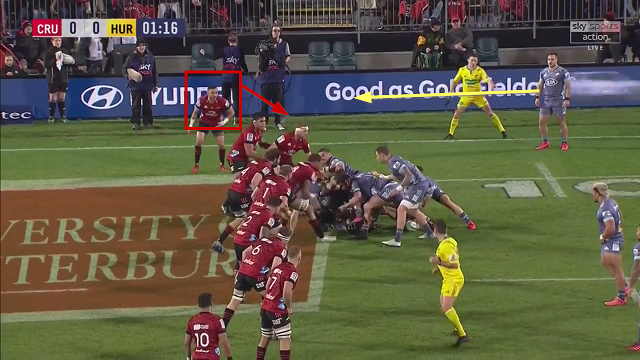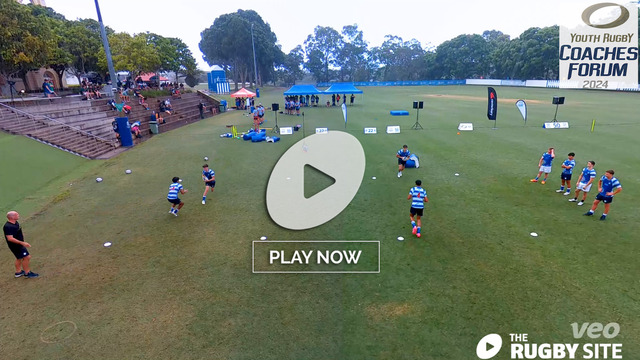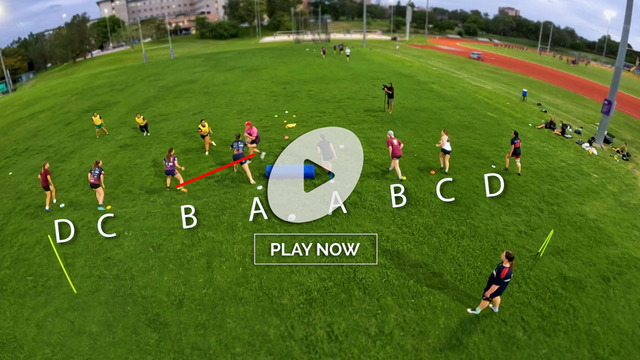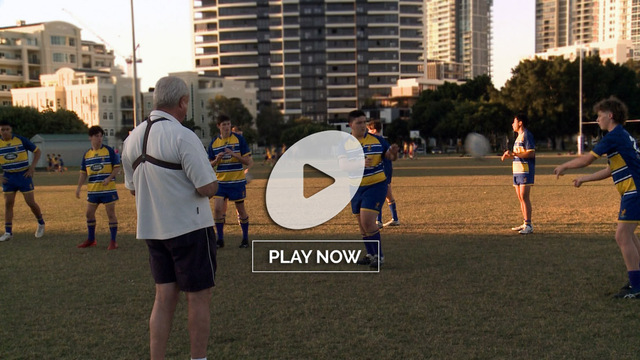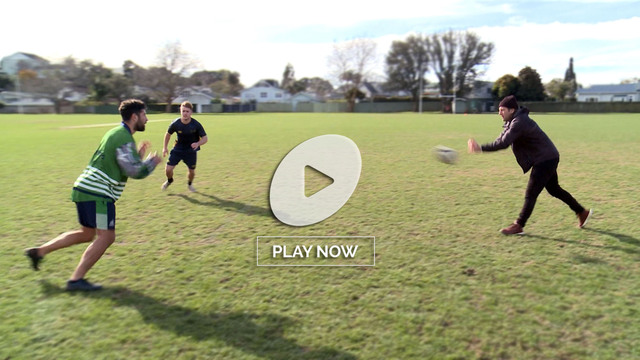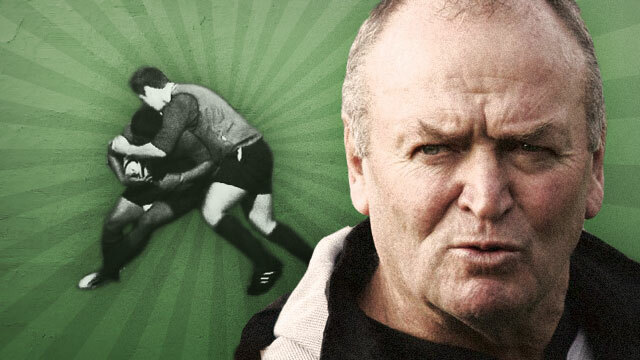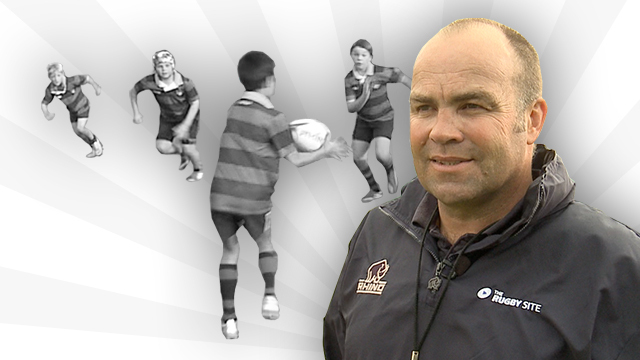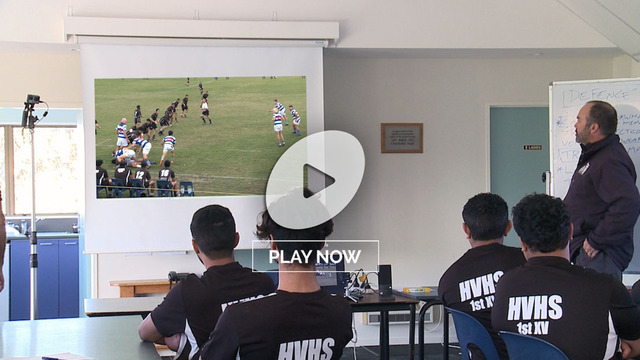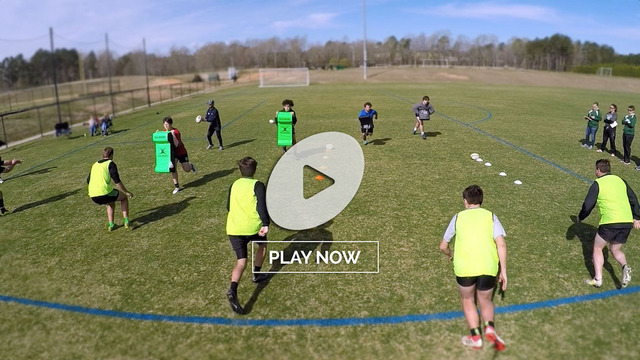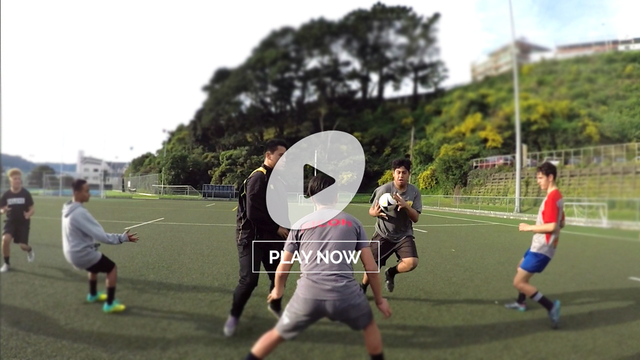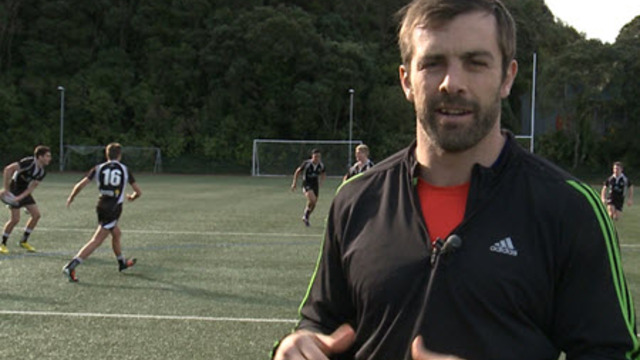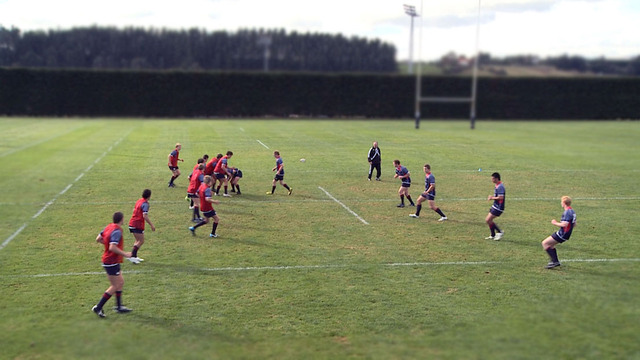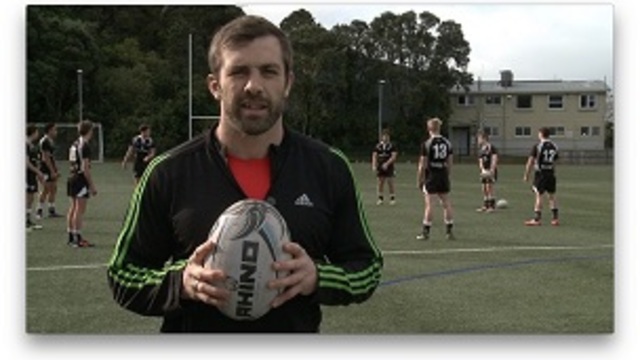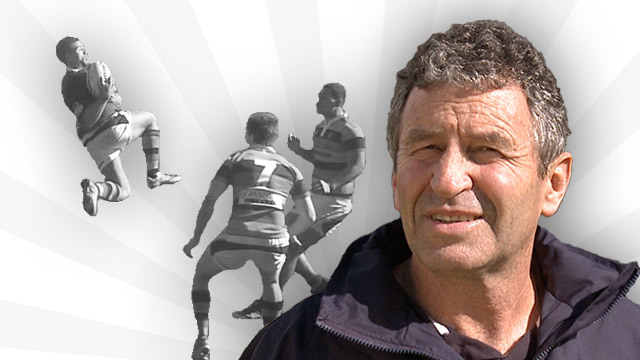How to defend the infield kicking game
In the article earlier this month, I explored some facets of the changes to the modern exit kicking strategy. With more emphasis on keeping the ball on the field of play rather than kicking it over the touch-line, there is correspondingly more accent on techniques used to either win the ball back in the air, or defend it.
Defence of the high kick is not complicated, but it does require concentration and good judgement of angles by the defenders. I say ‘defenders’ in the plural rather than the singular, because the ‘escort service’ is just as important as the action of the receiver!
The catcher needs to use the right technique for receipt of the kick, the men in front of him have to ensure that the chasing players do not get a free run at the ball as it descends.
We can illustrate the actions of the escort service by looking at a couple of examples which occurred in the recent Super Rugby Aotearoa match between the Crusaders and the Hurricanes. One is a success, the other is a failure.
The first instance shows how the Crusaders get the nuances of the detail right:
As the ‘Canes scrum-half T.J. Perenara prepares to launch the high, infield kick, the key escort defender is the man closest to the near side-line, who will be attempting to run the main chaser off his natural pursuit line to the landing zone of the ball – legally, of course.
That man is Crusaders half-back Bryn Hall:
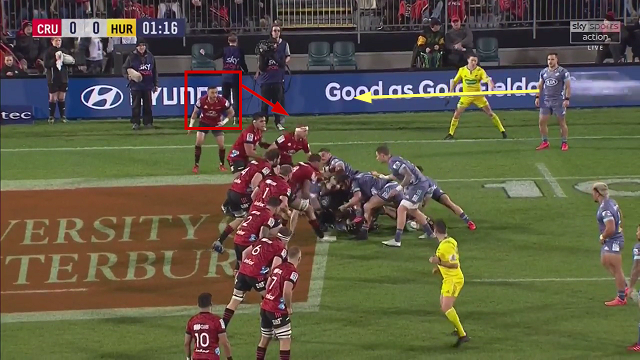
Hall is standing opposite the outside chaser, Canes wing Wes Goosen, but he is not facing him directly. He is timing his defensive run off the kick by Perenara, and his shoulders are facing towards the inside of the field.
Hall does not want to turn his shoulder outwards, towards touch, in order to track the chase by the Hurricanes wing. In this situation, attempts to ‘escort’ the chaser tend to resemble outright blocks, and draw a penalty from the referee.
Even more importantly, Hall wants to keep the inside track as the ball comes down out of the night sky. American Football blockers – like offensive tackles and tight ends – are always taught never to lose their opposite numbers inside on pass plays. If the defender is going to get to their quarterback, he must take the long way around, not the direct route.
Hall always maintains that inside leverage as Goosen closes in on the ball:
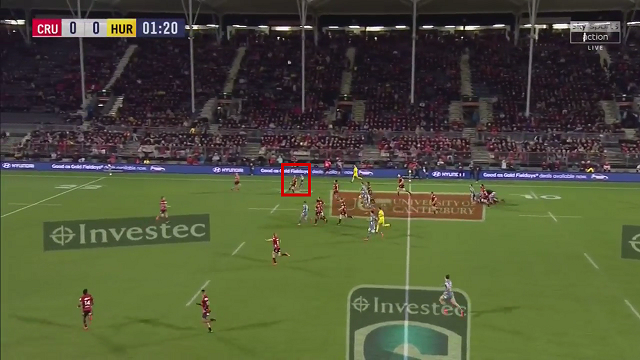
Goosen has to bend his run in from the outside at just the right moment, avoid colliding with the catcher (George Bridge) while he is in the air, and steer clear of Hall on the ground. It is too narrow a window of opportunity for him to manage successfully.
An example of a failing escort service was provided with roles reversed midway through the first half:
The issue here is that the outside defender (Hurricanes left wing Ben Lam) never has that inside track on the key chaser, his opposite number Sevu Reece. He never forces Reece to go the long way around:
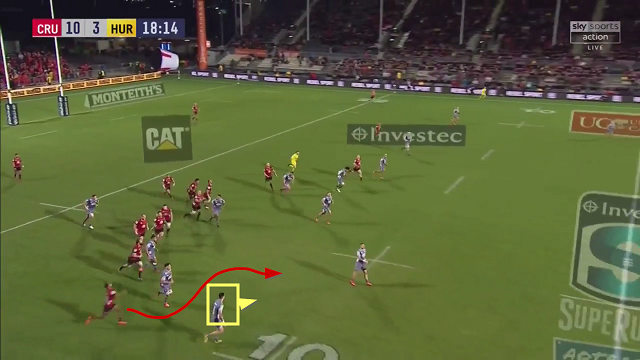
As a result, Reece is able to penetrate the gap inside him and accelerate straight on to the unprotected receiver, full-back Jordie Barrett. The result is a genuine contest for the ball and a turnover to the Crusaders via knock-on.
The second aspect of this scenario is the type of receipt the catcher should use when his protection has failed. The basic rule is that the more protection a catcher has, the less the need to leave the ground. Therefore, George Bridge in the first example hardly needs to leave the deck, because he knows that his protection from Hall is good and Goosen cannot mount an effective challenge.
When the escort service fails, the receiver needs to change mindset, get into the air quickly and preferably take the ball above his head, using an AFL technique:
In this example from another Super Rugby Aotearoa game between the Blues and the Highlanders, there is no real protection and the receiver (Blues’ wing Caleb Clarke) has been exposed to a potential one-on-one challenge in the air. He defuses it by getting up early with ‘high knees’ to cushion any impact, and taking the ball well above head height:
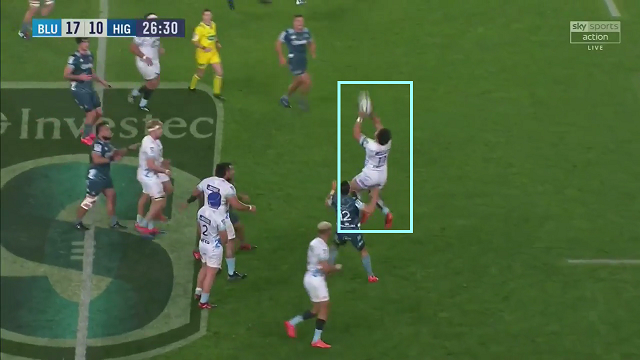
Defending the high kicking game demands a lot of accuracy and good judgment from the defence, especially if the kick is well-placed for the chaser(s). The escort service has to keep the inside track and force the chase wide, denying penetration on to the ball. The receiver has to judge whether he will be under serious challenge as the ball descends, and adjust his catching technique accordingly. It is a ‘game within a game’, and one of fine margins.
